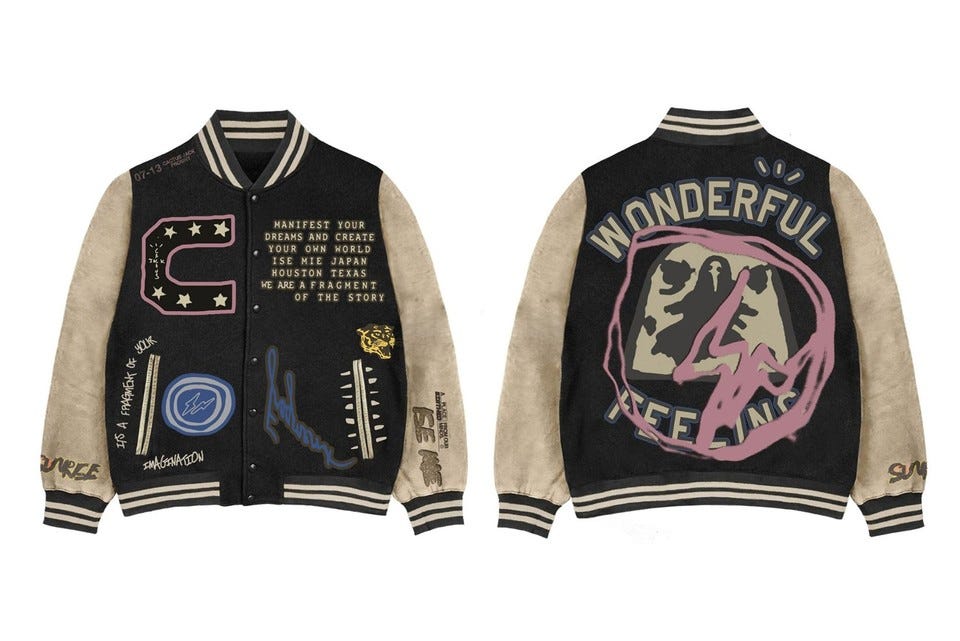How Does Hiroshi Fujiwara Do It?
Japanese streetwear's most prominent collaborator keeps on kicking.
There’s an interview with Hiroshi Fujiwara in the book The New Luxury about how the so-called “godfather of Japanese streetwear” discovered the power of co-branded collaborations. When asked about his first luxury purchase, he says it was a notebook from Tiffany & Co., something he began to stock up on pretty regularly, since day planners were practical before Google Calendar existed.
He developed a faraway appreciation for the storied jeweler-turned luxury brand through its more traditional connotations, like Audrey Hepburn’s indelible portrayal of Audrey Hepburn in Breakfast At Tiffany’s, ironically one of the many associations the label is currently trying to dissociate itself from.
That said, one thing that blew his mind was the fact that Tiffany had co-branded products like Montblanc pens and even Rolex watches. He wondered why a brand of such esteemed provenance couldn’t just make pens and timepieces themselves — after all, they surely had the resources and pedigree. Instead, it was explained to him that the logic behind these partnerships was that it made more sense to partner with the best makers in the game to make a better product and tell a deeper story, elevating the respective strengths of all parties involved.
Safe to say, that logic has informed Fujiwara’s body of work since then. Several hundred Tiffany day planners later, the Japanese cultural figurehead has worked with everyone from Louis Vuitton to BVLGARI, Supreme, Apple, and Starbucks. Oh right, and some shoe company called Nike.
Lest you forget how he’s also the godfather of the rare sneaker game, an entire article about the importance of HTM, his collaborative footwear line with Tinker Hatfield and former Nike CEO Mark Parker (Hiroshi, Tinker, Mark…get it?) predated modern sneaker mania. Back then, sneaker design was more cerebral and about subtle twists on textures, materials, and elevated construction, now it’s seemingly enough to turn a Swoosh around and think of some bright colorways that can pop off on the ‘gram.
But in some ways, Fujiwara’s earned the right to cash in on his hard-earned brand equity. Of that early Harajuku set, he’s the only one that’s never been burdened with a physical retail legacy. In fact probably the most prominent retail footprint he had was likely when Porter Yoshida & Co. handed him the reins to establish HEAD PORTER (now RAMIDUS) and he teamed up with Stüssy to open up a SoHo location above their store.
Under his fragment design imprint, known for its double lightning-bolt logo, he’s managed to do the impossible consistently: Create hype product that everyone wants, and gets everyone talking. In other words, maybe the electrifying iconography is appropriate because he’s been able to put lightning in a bottle so many times.
That kind of statement certainly can’t be said for many of streetwear’s elder statesmen, and it shows in the frenzy around the fragment x Travis Scott x Jordan sneakers. Say what you will about getting KAWS to fully embrace his OriginalFake apparel side again, but it’s wild to see the Companion go all-in on Cactus Jack merch.
On the one hand, it’s indicative of how much of a commodity the game has become, but on the other, it’s a wearable streetwear history lesson for all the heads who remember a little over a decade ago when people were fiending for similar shit. The continued demand for Fujiwara collabs though? That’s no fragment of anyone’s imagination.





Great article. Love the wordings ‘wearable streetwear history lesson’. It reminds me when and how I started loving streetwear. As an Asian, I am lucky to be able to easily enjoy the insanity of Ura-Harajuku trend when I was a kid. Hiroshi is definitely my hero.
Love the twist on words throughout the article. Not including the actual information itself, it feels very personable and creates a perfect image of the past and culture in your mind. It is great to learn of the mysteries and ways of these historic designers. Especially seeing the constant demand for decades as these companies continue to release limited items. And In all it’s glory, most of it couldn’t be accomplished without the help of Hiroshi. Great article